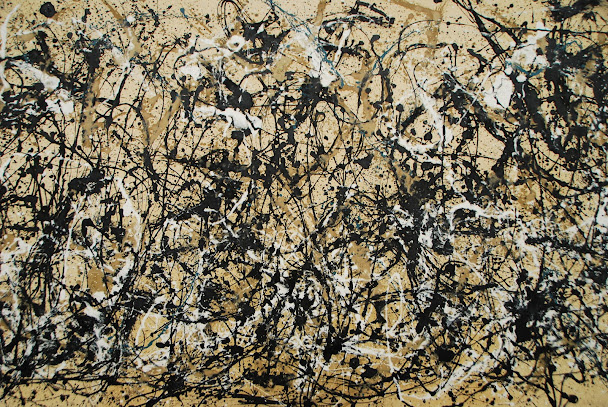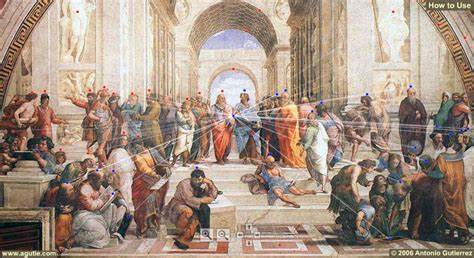The early modern era was profoundly shaped by World War I, with countless artists directly experiencing combat as soldiers, medics, or war artists capturing the realities at the front. These influential figures produced powerful works either during the conflict or inspired by their firsthand accounts of battle. Artists relentlessly sought a fitting language to articulate the chaos and devastation unleashed by modern industrial warfare. They decisively reevaluated their subject matter, techniques, materials, and styles, as well as their roles and responsibilities as cultural producers.
Meet Oppenheim,
Object, 1936
Meret Oppenheim
One of the most intriguing figures of the early modern era is Meret Oppenheim, a prominent Surrealist artist whose work left a lasting impact on the art world. Oppenheim's journey into the realm of Surrealism began at a remarkably young age, as she immersed herself in the vibrant artistic community of Paris. It was during a fateful moment in 1936 that she conceived her iconic piece, "Object." This inspiration arose while she was seated in a charming Parisian café alongside the renowned artist Pablo Picasso and the captivating Dora Maar. As they engaged in conversation, the trio admired a striking metal bracelet, uniquely adorned with soft, luxurious fur, which Oppenheim happened to be wearing. In a moment of playful creativity, Picasso suggested that anything could be cloaked in fur, sparking Oppenheim's imagination.
The resulting artwork, "Object," quickly ascended to fame for its bold and imaginative exploration of contrasting elements. It exemplifies the Surrealist intention to challenge societal norms by forcibly juxtaposing objects that appear incompatible, thereby dismantling the viewer's sense of reality. The visceral imagery invoked by this piece is particularly striking; the sensation of damp, warm fur brushing against one’s tongue and lips, along with the unsettling vision of liquid flowing over the fur, elicits an immediate feeling of discomfort and repulsion. This art encapsulates the profound conflict between the conscious mind and the depths of the unconscious, offering a window into the psychological tensions that define human experience. Furthermore, the unsettling nature of the piece resonates deeply with the historical trauma of World War I, reflecting the tumultuous emotions of the time. Given its significant thematic depth and innovative composition, "Object" deserves a prominent place in a museum committed to showcasing the complexities and nuances of Surrealist art, where it can continue to engage and provoke thought among audiences.

\
Marcel Duchamp, The Large Glass, 1915
Marcel Duchamp
Another notable artists who emerged during the early modern era and was profoundly influenced by the events surrounding World War I is Marcel Duchamp. In 1915, while residing in New York, he embarked on the creation of his groundbreaking artwork known as "The Large Glass" (officially titled "The Bride Stripped Bare by Her Bachelors, Even"). This piece, which he left unfinished—an aspect he later emphasized when he declared it "genitively unfinished" in 1923—stands out for its innovative approach to art.
Unlike many of his contemporaries, Duchamp did not adhere to the traditional norms of formal abstraction characterized by geometric shapes and lines. Instead, he pursued what he referred to as an abstraction of ideas. Through "The Large Glass," Duchamp sought to explore the complexities of human perception and desire, delving into the often absurd mental landscapes that accompany these experiences. This exploration was particularly poignant given the tumultuous backdrop of World War I, a conflict that claimed millions of lives and left lasting scars on societies around the globe.
Duchamp’s work serves as a reflection on humanity’s impulse to impose rationality on chaotic and irrational experiences, notably human desire—an endeavor that can be perilous, especially during times of war. The societal upheaval caused by the war profoundly influenced many artists of the period, including those involved in the Dadaist movement. This avant-garde movement arose as a direct response to the senseless violence and destruction of the war, critiquing the very art institutions that were seen to perpetuate the ideologies leading to such conflict. "The Large Glass" not only exemplifies Duchamp’s unique artistic vision but also encapsulates the spirit of Dadaism as it challenged traditional artistic conventions and questioned the role of art in a world fraught with instability and absurdity.
Francis Picabia,
Ideal, 1915
Francis Picabia
Francis Picabia's artwork "Ideal," created in 1915, draws inspiration from his fascination with technical manuals and diagrams, showcasing his deep appreciation for the advancements of the mechanical age. During this period, Picabia was residing in New York, where he engaged in a clandestine wartime mission to acquire supplies across the Americas, cleverly disguising his intentions as an artistic pursuit.
In "Ideal," Picabia utilizes the concept of machinery as a metaphorical framework to explore the rapid changes and new sensations that defined modernity. His artwork features unconventional combinations of machine parts, which not only celebrate human creativity and invention but also highlight the inherent flaws and limitations of these innovations. This duality is particularly poignant against the backdrop of World War I, a conflict that saw the unprecedented deployment of new technologies, fundamentally transforming the nature of warfare on a global scale.
The themes present in "Ideal" make it an exceptional candidate for display in a machinery or factory museum. The artwork embodies the spirit of the time, encapsulating both the awe of technological progress and the sobering realization of its consequences in human conflict. Through Picabia's unique perspective, viewers are invited to reflect on the complex relationship between humans and the machines they create, a dialogue that remains relevant in today's world.
Each of these artworks possesses a unique beauty, rich in both meaning and history. However, the piece created by Marcel Duchamp stands out to me as the ideal artwork to display in my home. Whenever I gaze upon this particular piece, I am struck by the palpable tension that captures the emotions and turmoil of the First World War. It evokes a sense of the struggle and chaos of that time, making it not just visually striking but also deeply thought-provoking. Displaying this artwork would serve as a constant reminder of the profound impact of history on contemporary life.
Bibliography
Josh R. Rose, Dr. Steven Zucker and Dr.
Beth Harris, "Meret Oppenheim, Object (Fur-covered cup,
saucer, and spoon)," in Smarthistory, April 9, 2022, accessed
November 4, 2024, https://smarthistory.org/meret-oppenheim-object-fur-covered-cup-saucer-and-spoon/
Farrell, Jennifer. “Art as Influence and Response: A First Look at World War I and the Visual Arts.” The Metropolitan Museum of Art, www.metmuseum.org/perspectives/world-war-i-and-the-visual-arts-introduction. Accessed 4 Nov. 2024.

















.jpg)
.jpg)





